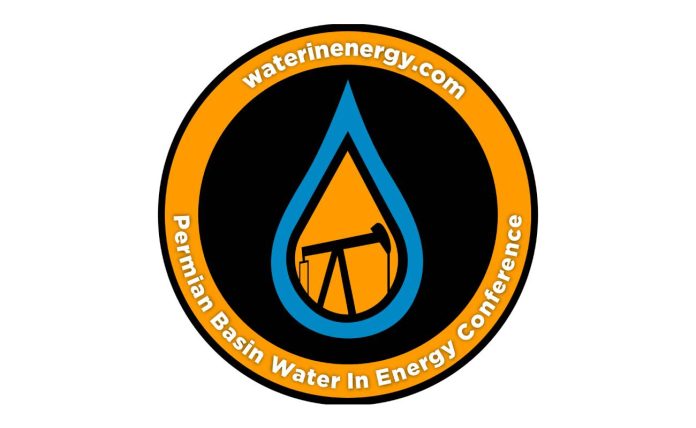Extracting high-dollar lithium from brine and produced water is a potential new way to make big money in the oilfield that researchers and companies are busily looking into.
Having reviewed the subject at the recent Permian Basin Water in Energy Conference in Midland, Tetra Technologies President-CEO Brady Murphy of The Woodlands says the samples of the Permian Basin’s produced water that Tetra has studied so far have had fairly low concentrations, but the Smackover Formation in South Central Arkansas is loaded with it and bromine.
Companies are already making good use of the iodine and bromine in brine, the other “critical minerals” detailed in the panel discussion.
Lithium is necessary to make batteries for electric vehicles while iodine has medical applications and bromine is in oil well completion fluids and fire retardants.
Another conference panelist was Scott Conley of Cypress, senior vice president of commercialization at the EnergyX Corp., which is focused exclusively on lithium.
Waco economist Ray Perryman says the technology has been developed to make significant lithium production probable in the Basin.
The mineral was bringing $86,000 a metric ton before it recently dropped to $52,000.
Murphy said it “is a hugely profitable business if you’re successful in extracting it,” adding that iodine currently goes for $60,000 and bromine for $3,500 per metric ton.
“A general rule of thumb is that if the concentration of lithium is less than 100 parts per million, you wouldn’t want to invest $100 million-plus in a plant,” he said. “The samples we have seen in the Permian Basin were between 20 and 50, but in the Smackover brine we have seen as high as 425-450, some of the highest concentrations that we are aware of in the United States.”
Murphy said Tetra has seen several hundred parts per million of iodine in some locations in the Basin’s produced water.
Tetra Technologies, with 1,300 employees in 20 countries, is using bromine in completion fluids and has recently developed an electrolyte based on zinc bromine for long duration energy storage.
“We’re seeing pretty decent concentrations of bromine in some locations in the Permian Basin’s produced water, as high as 2,000 parts per million,” Murphy said. “In the Smackover it’s over 4,000.”
Iodine has been extracted from brine since 1987 near Vici in Western Oklahoma by the Iochem Corp., which manufactures 1,200 metric tons annually, according to references.
“Iodine is also used to make electronic liquid crystal displays,” said Murphy, whose company also works in comprehensive water management, frac flowback, production well testing and offshore rig cooling.
“There’s a lot of effort going on around lithium extraction,” he said. “A lot of people are trying to prove it out commercially. There are multiple stages in the process that you have to go through.
“It’s an emerging technology,” he said, adding that Tetra plans to increase its commitment to potential lithium production.
Conley said the price of lithium, a soft white powder in its commercial form, should eventually stabilize at $20,000 to $30,000 per metric ton or 2,205 pounds and that with the right concentrations a plant is feasible in the Basin.
Along with batteries for electric vehicles, he said, it’s used to make ceramics and glass and it has medical uses.
Conley said the five-year-old EnergyX is looking for investors to tap it in Arkansas and the Salton Sea’s underground geothermal resource in Southern California and in produced water from the Marcellus Shale in Ohio, Pennsylvania, West Virginia and New York. The company has 45 employees and plans to double that.
“We’ve developed novel compounds that extract lithium and novel membranes that separate ions and produce lithium hydroxide, the commercial form,” Conley said. “There are huge deposits in Australia and the liquid brine 200 feet down in the Lithium Triangle in Chile, Bolivia and Argentina is full of it.”
EnergyX or Energy Exploration Technologies’ science and engineering center is in Austin. “We have three core technologies,” Conley said.
“Absorption takes lithium out of brine or produced water. We feed that to solvent extraction to concentrate the lithium and remove impurities, then electrodialysis converts the lithium ions to lithium hydroxide.”
Envisioning three pilot plants, he said, his company wants to build in the U.S. and is looking at South America, where it has investors.
He said most of the world’s lithium comes from Australia and South America while China makes most EV batteries and gets lithium from its salt lakes.
“There is a ready local supply here in the U.S.,” Conley said. “We just need to get it out of the ground.”
Perryman said bromine and iodine “interact chemically with lithium in some useful and efficient ways, but the demand for them is not increasing at the pace of the demand for lithium.
“Possibilities for extracting minerals from brine have been recognized and discussed for decades,” the economist said. “The key challenge has been developing the technologies to do so in a cost-effective, economically viable manner.
“We have now reached a point where we have both higher demand for minerals and proven ways to extract them,” Perryman said. “The extraction of lithium from oilfield produced water is already ongoing in some areas of the United States, but the levels of minerals recoverable from brines vary significantly. The market potential in the Permian Basin comes down to whether the concentration of lithium is high enough to justify the investment in needed facilities and infrastructure.”
However, he said it looks feasible.
“At this point it appears as if it could be a profitable business in the region, particularly given the sheer volumes of brine available,” Perryman said. “It could potentially lead to a number of benefits ranging from reducing oil production costs to enhancing the U.S. lithium supply.
“Assuming that pilot projects prove to be successful and show profitability, we may well see significant development.”




